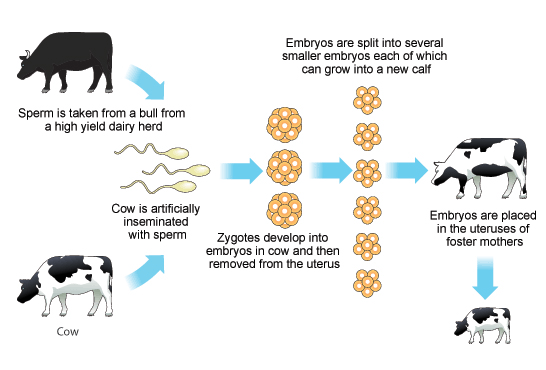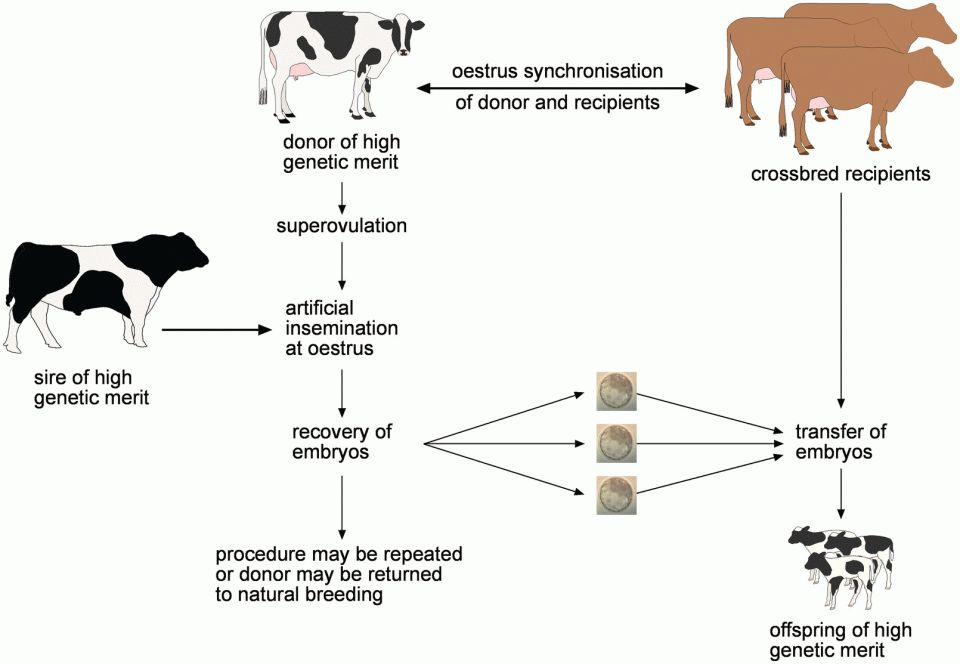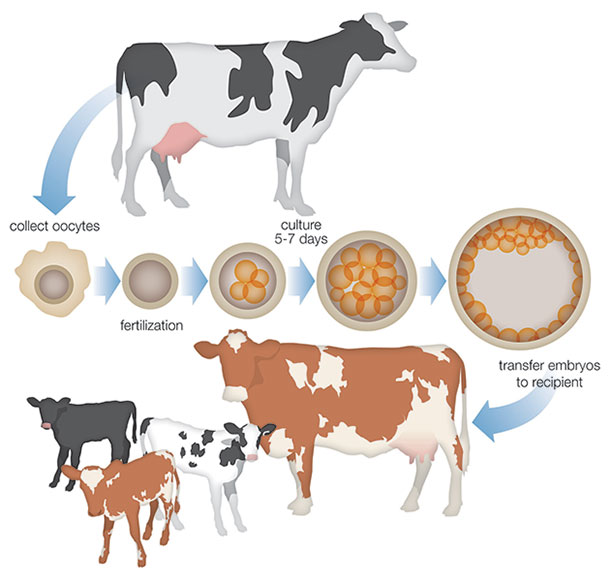Multiple Ovulation and Embryo Transfer in Cattle
Form high milk-producing cow in a lifetime calving get 5 or 6 calves. At the onset of estrus or heat cycle under the influence of follicular stimulating hormone, only one ovum is mature, as such the cow gives one calf.
However, if a higher dose of FSH (Follicular Stimulating Hormone) is injected into cow then it will shed many ova. The number of ovum shed may range from 10 to 100. After shedding the eggs, the cow is artificially inseminated with sexed semen. After fertilization, there will be multiple embryos in the uterus of the cow. These embryos float in the uterus for 7 to 8 days. In this floating stage, these embryos are flushed out and transferred to the number of cows on the 7th day of the heat cycle by synchronizing their heat cycle. These synchronized cows will produce a calf after 9 months.
These cows will produce the calf after nine months. So from good cows and good bull in 9 months you can produce many calves (10-100). By this technique production of one dozen calves is quite common. But even 80-100 calves have been produced.
Thus in this way, we can make photostat copy of the cow and bull. Because there is multiple ovulation in the cow and the embryo formed are harvested and transferred to several cows. So this technique is known as multiple ovulation and embryo transfer technique. In short, it is known as MOET. The technique of MOET is shown in the diagram below.


